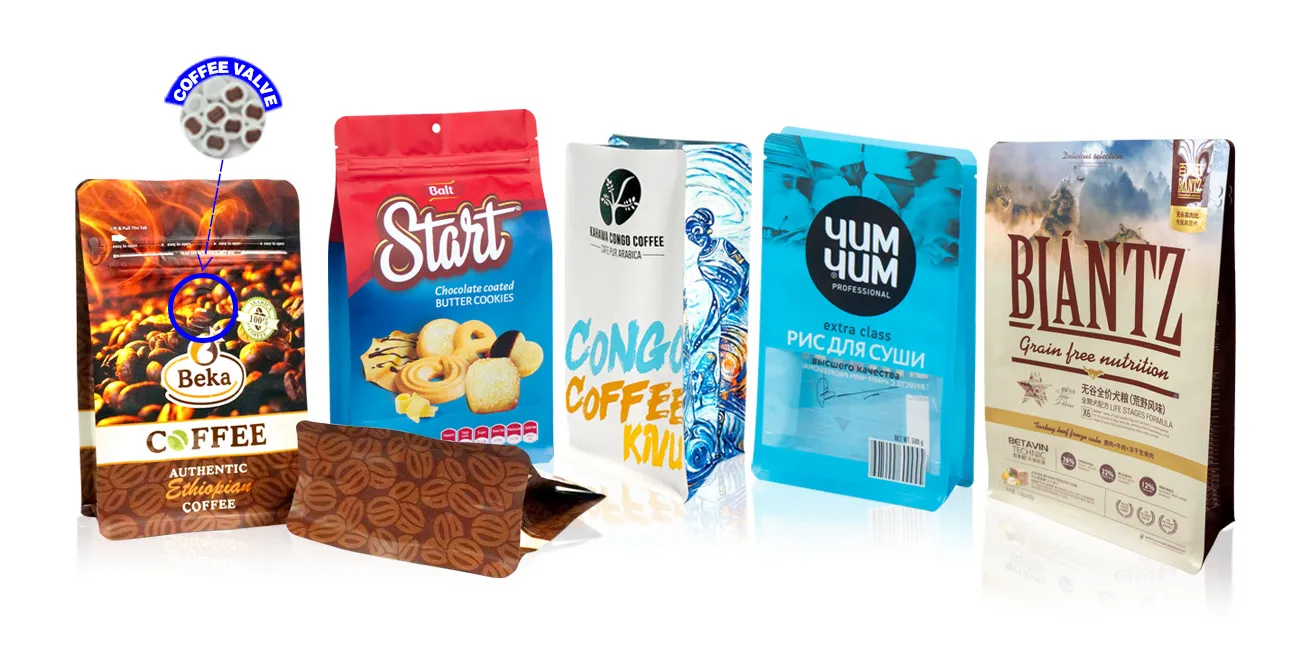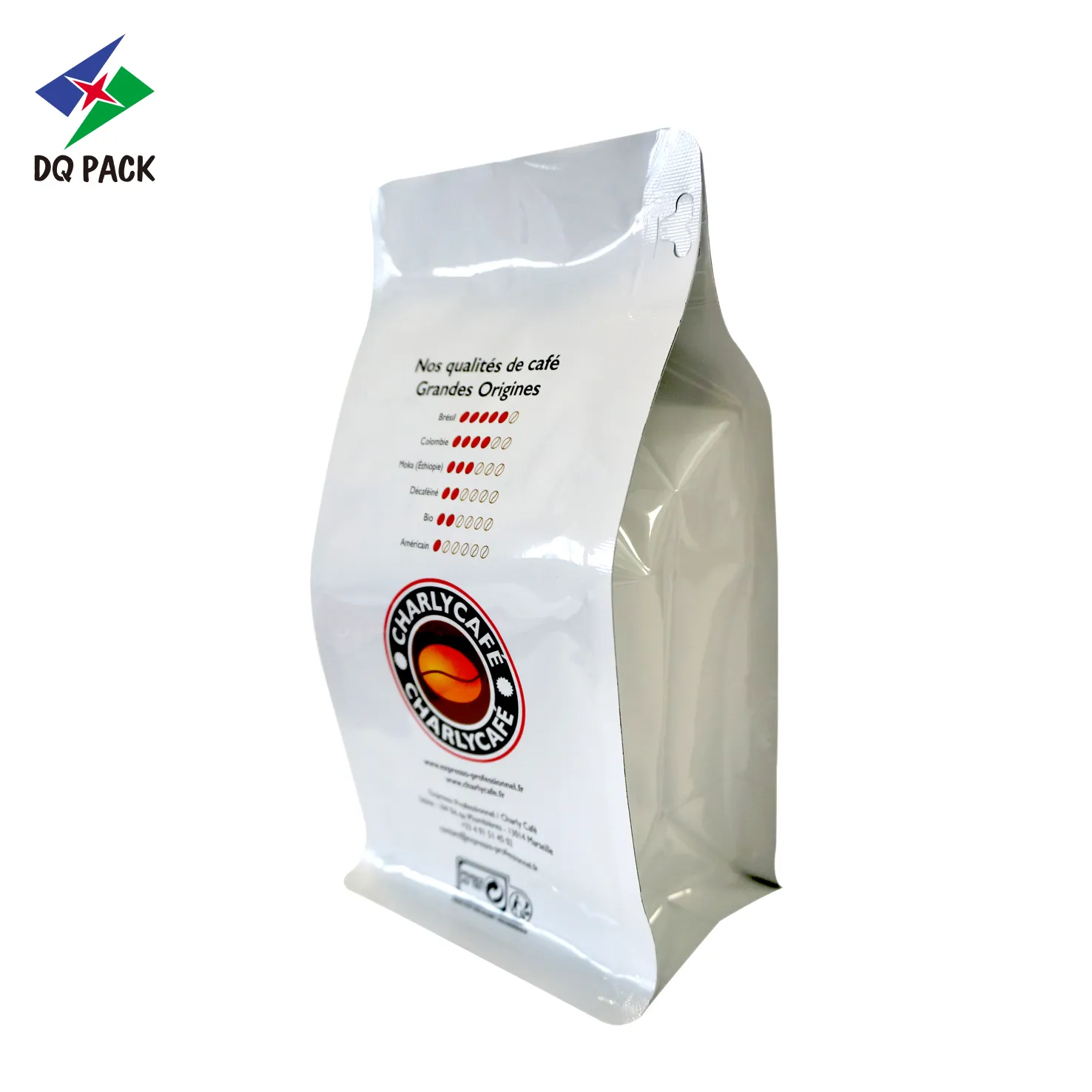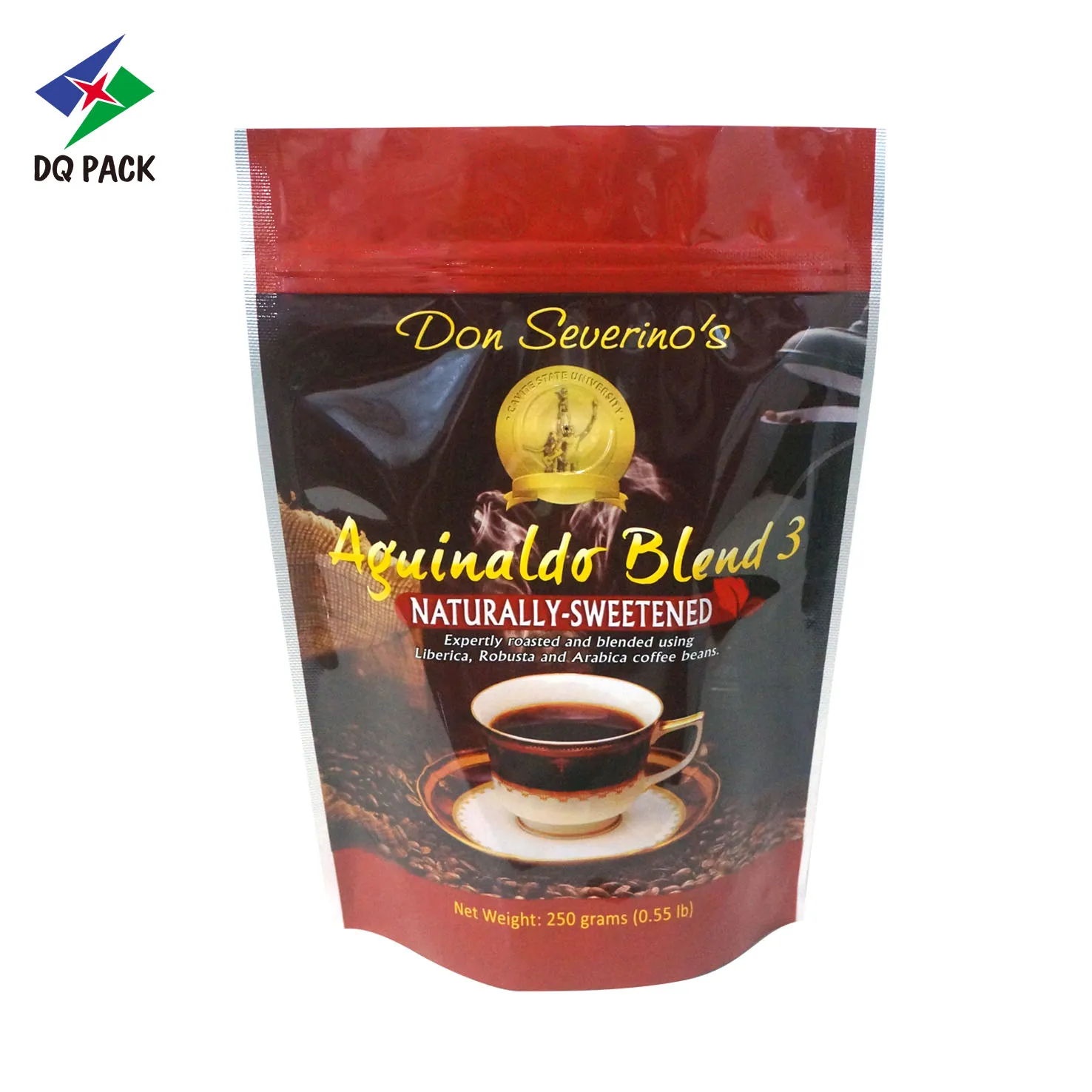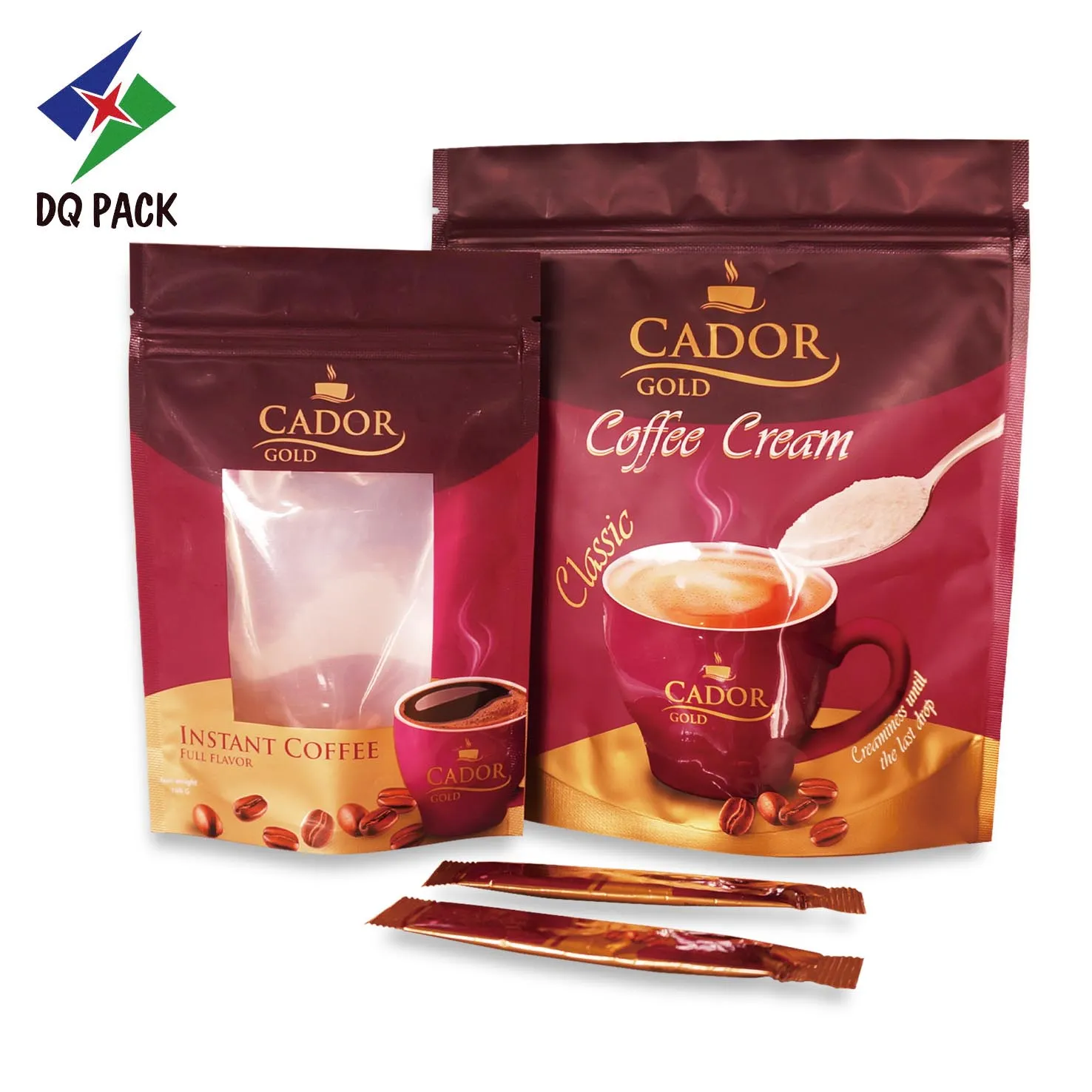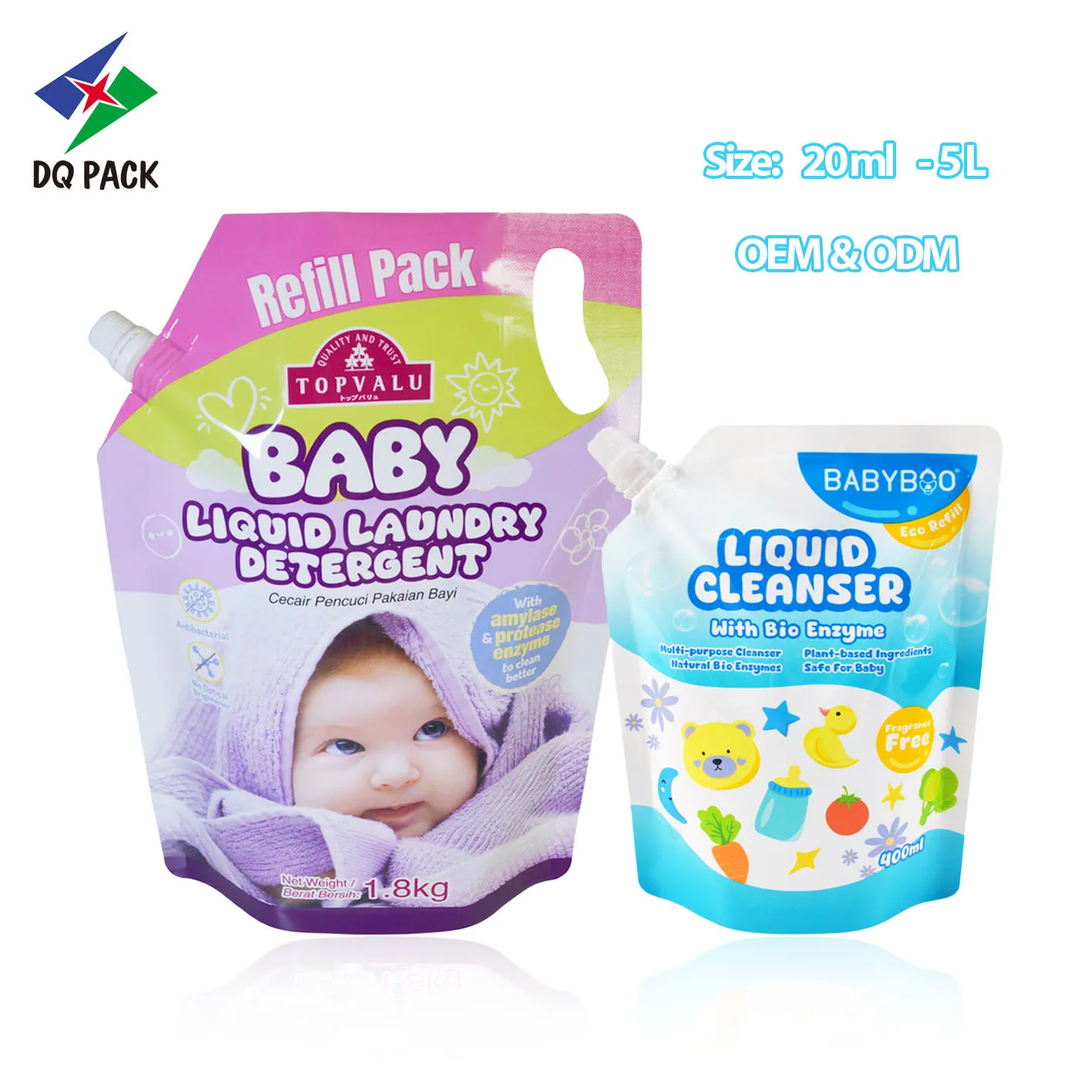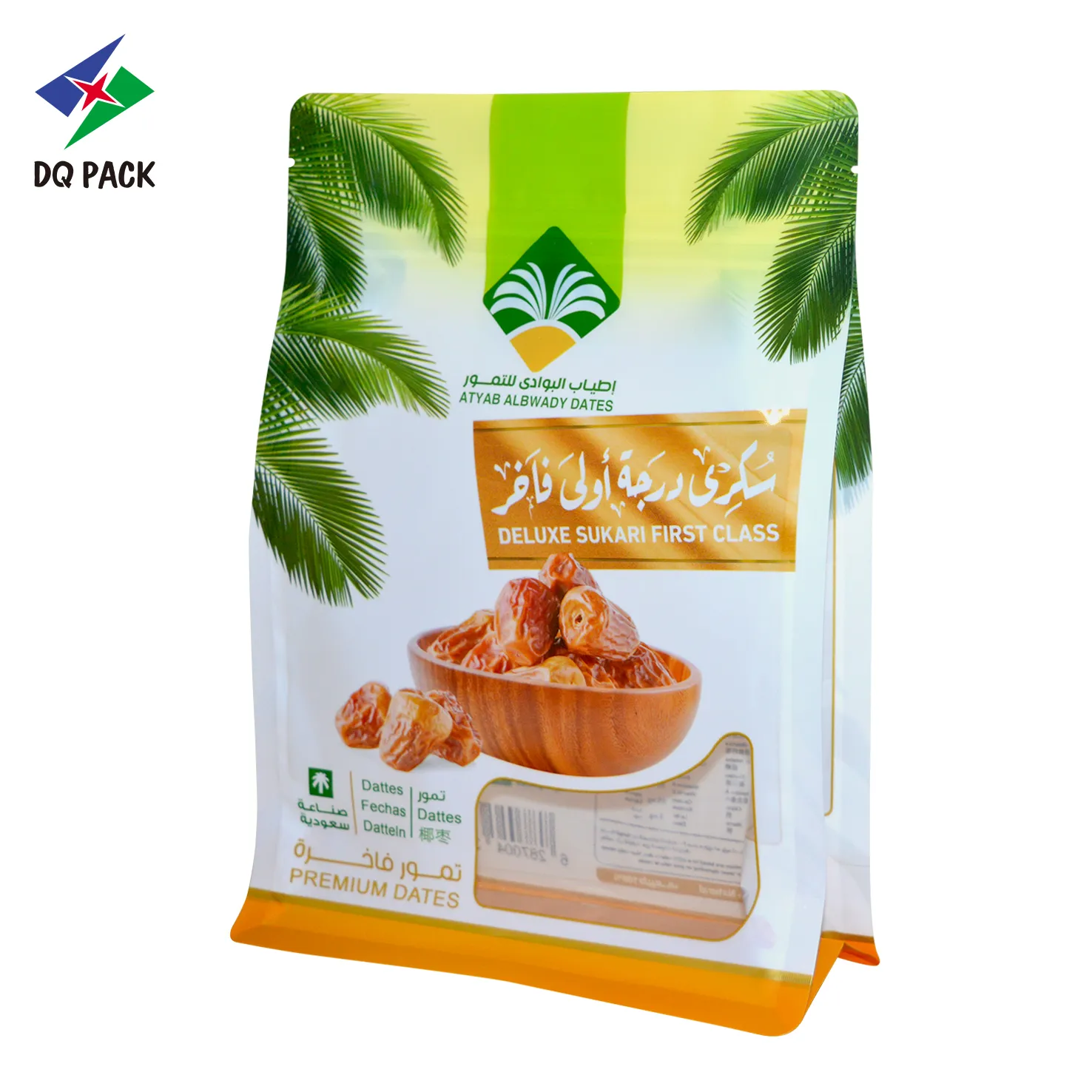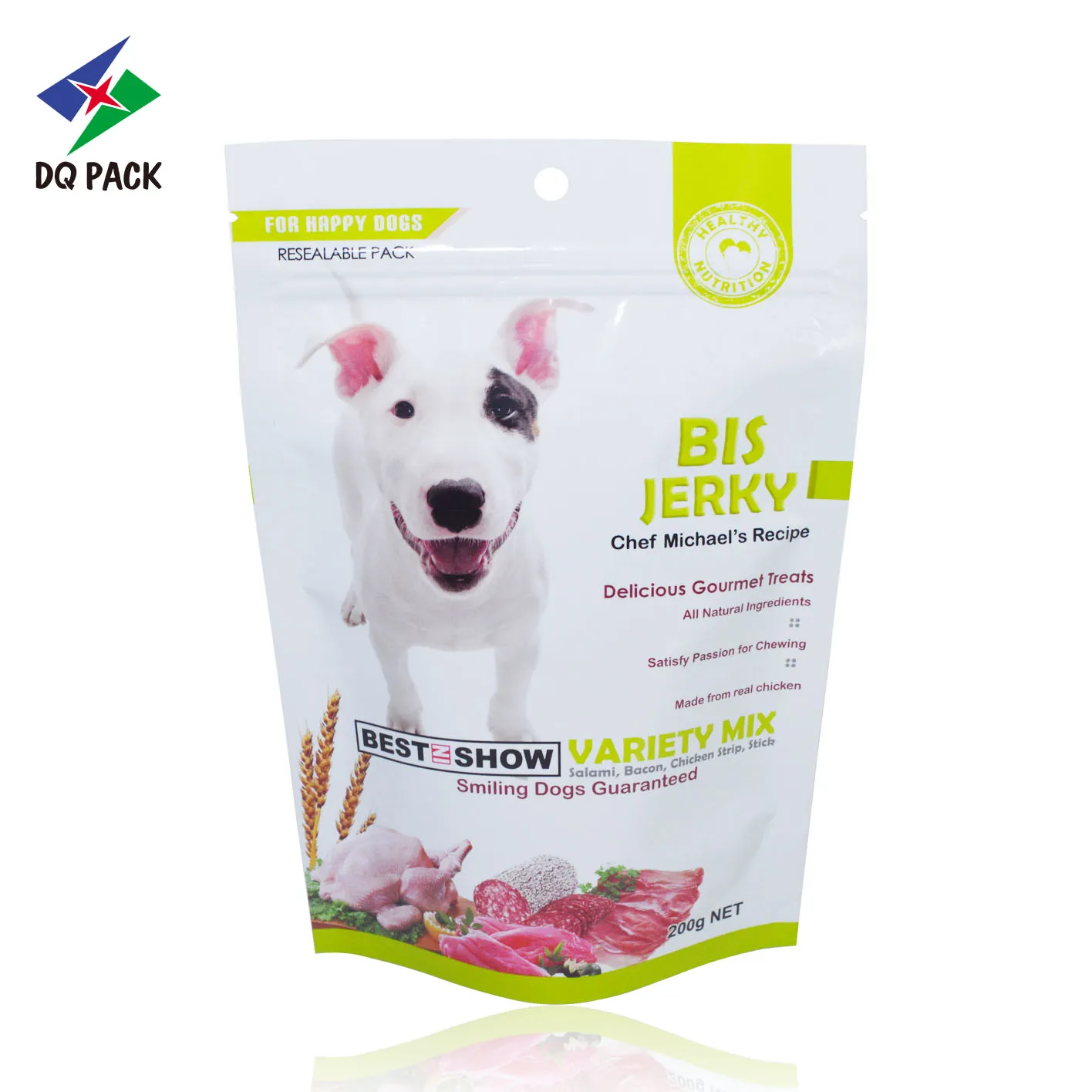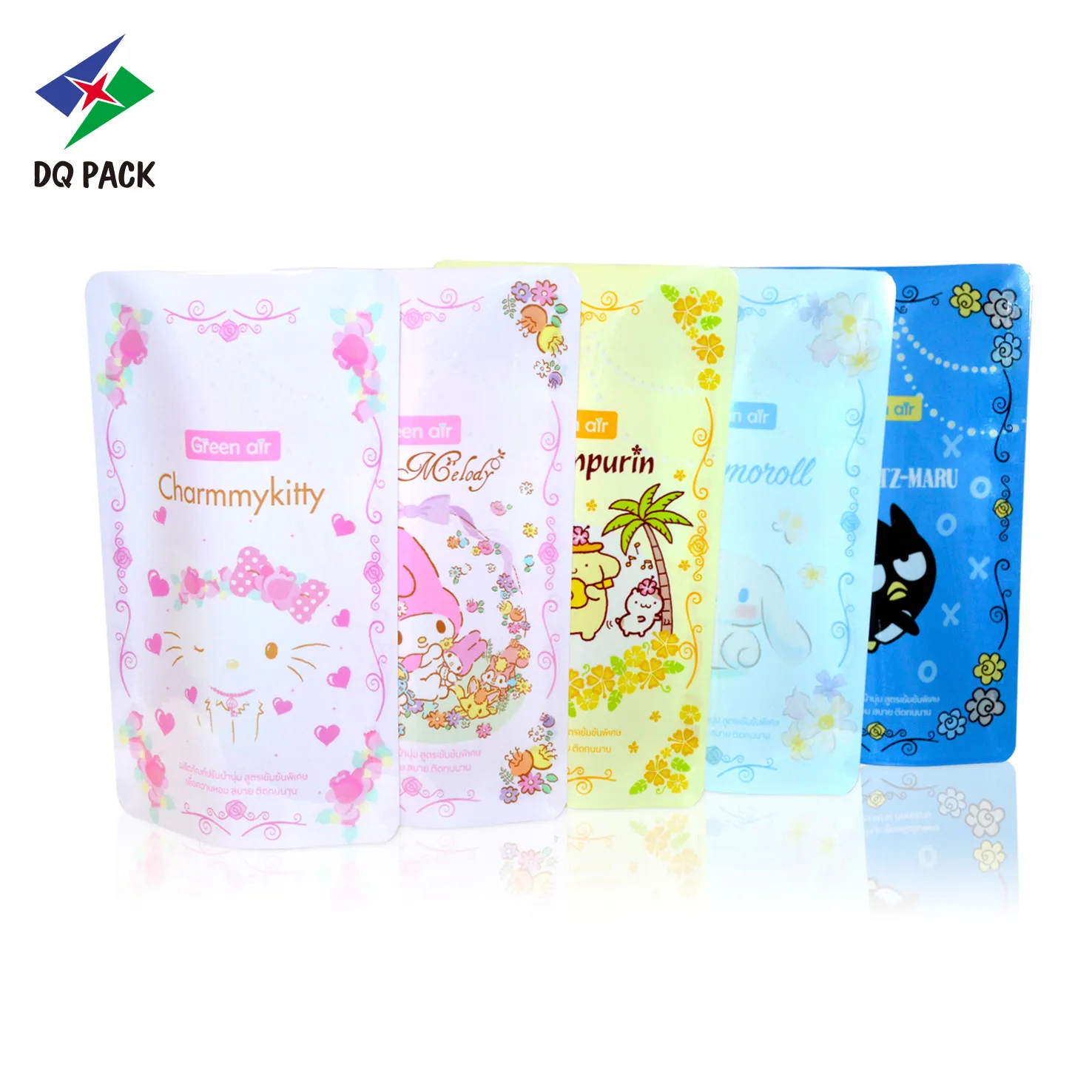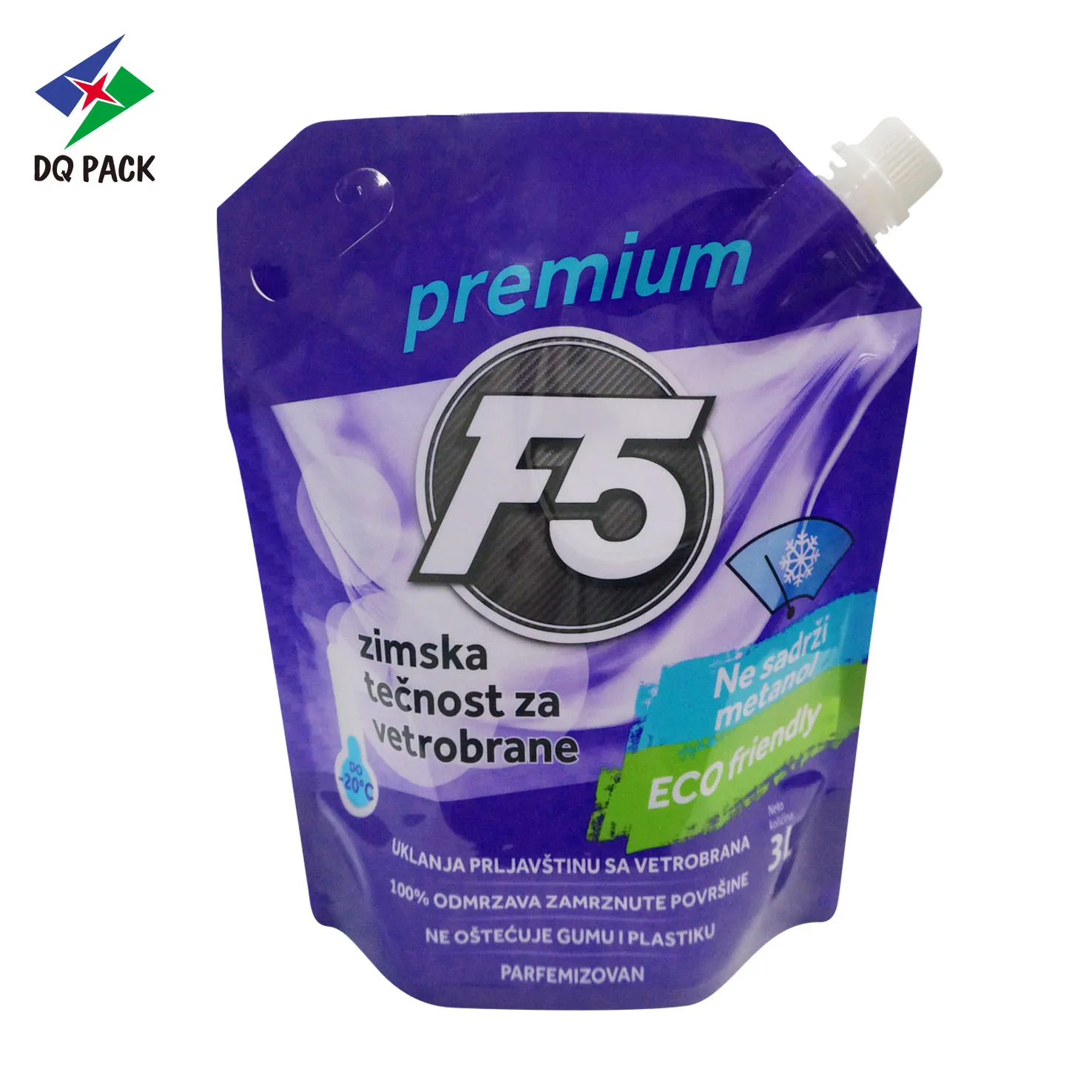Coffee isn’t just a commodity — it’s an aromatic experience. Therefore, many people like it. But seldom do they think about why they can get such a great drinking experience. From roast date to first pour, packaging is the single most important control point that preserves aroma, protects quality in distribution, and communicates brand promise.
The right coffee package keeps beans or grounds fresh, survives handling, and makes the product stand out on the shelf. In this blog, DQ Pack, a professional custom flexible packaging manufacturer, will talk about what and the importance of coffee packaging is.
What Coffee Packaging Must Achieve
Good coffee packaging must:
- Preserve aroma and prevent oxidation
- Allow degassing while blocking oxygen ingress
- Provide mechanical protection (puncture, crushing)
- Enable reliable seals and tamper evidence
- Support brand storytelling and shelf appeal
- Balance performance with sustainability and cost
Each of these functions maps to specific film choices, laminate structures, and finishing features — covered next.
Core Functions and the Material Choices
Barrier protection (stop oxygen, moisture, light)
Coffee is highly sensitive to oxygen and aroma loss. Typical material choices:
- Aluminum foil (foil-based laminates) — near-ultimate barrier to oxygen, moisture, and light; used for long shelf life and export. Common stack is PET / Al foil / PE.
- Metallized PET (VMPET) — good barrier with better mechanical strength and lower cost than foil; used in many roasted-bean pouches. Stack choice can be BOPP / VMPET / CPP or PET / VMPET / PE.
- EVOH-containing laminates — deliver very low OTR when sandwiched between polyolefins (e.g., PET / EVOH / PE); useful when a non-metallic solution is preferred.
- Mono-PET or mono-PE with barrier coatings — evolving solutions for recyclability where MAP or thicker gauges compensate for the barrier.
Aroma retention & grease resistance
- Inner sealant PE/CPP (polyethylene or cast PP) is formulated to resist oil migration and provide strong heat seals.
- Barrier layers (EVOH/foil/VMPET), commonly in the middle of the stack, help stop volatile aroma compounds from permeating out.
Degassing/valve compatibility
- Degassing (one-way) valves are generally plastic components welded into the package. Valve compatibility depends on:
- A stable, flat valve pad area in the laminate (e.g., PET outer with PE sealant).
- Valve design (adhesive-bonded or heat-welded) matched to the sealant.
- Alternative: nitrogen flush (MAP) plus strong barrier laminate if a valve is not used.
Mechanical protection (puncture & abrasion)
- PET or PA (nylon) layers add toughness and puncture resistance in PA/PE or PET/EVOH/PE laminates — ideal for whole beans or coffee shipped in bulk.
Sealability & processability
- PE / CPP sealant layers are common because they provide predictable heat-seal windows and high hot-tack, critical on high-speed form-fill-seal (VFFS) lines.
- Note: high-barrier outer layers (foil, VMPET) must be paired with compatible inner sealant layers to maintain reliable seals.
Common Coffee Packaging Formats and Usage Scenario
- Valve stand-up pouch (SOUF / doy/zipper) — the industry standard for roasted whole bean and ground coffee. Valve allows CO₂ escape while preventing oxygen ingress; zipper for reseal.
- Flat-bottom/box pouches — premium look and stability for larger sizes.
- Tin-ties & paper bags (with foil lining) — traditional retail aesthetic, often used for specialty roasters.
- Rigid tins or cans — long storage, premium positioning, and reusability.
- Single-serve capsules/pods — different material and barrier needs due to brewing conditions.
Branding, Print, and Finish Considerations
Outer layer choice (BOPP vs PET) affects print quality, color saturation, and finish options (gloss, matte, soft-touch).
| Feature | BOPP (Biaxially Oriented Polypropylene) | PET (Polyethylene Terephthalate) |
| Print Quality | Good, but it can sometimes appear slightly less vibrant than on PET films. | Superior clarity and dimensional stability, resulting in extremely high-definition print quality. |
| Color Saturation | Good, but can sometimes appear slightly less vibrant than on PET films. | Exceptional, allowing for deeper, richer color saturation that makes branding pop. |
| Finish Options | Highly versatile; readily accepts gloss, matte, and specialty finishes like soft-touch. | Versatile; supports gloss, matte, and often forms the base for premium decorative effects. |
If you want tactile luxury (soft-touch) or spot gloss effects, you require converted, filled proofs — coatings can affect sealability and recyclability.
Sustainability — Realistic Options for Coffee Packaging
- Mono-PE / mono-PET constructions with barrier coatings are becoming viable for roasters aiming to improve recyclability — best for short-to-medium shelf life or local markets.
- rPET / rPE content reduces footprint but ensures aroma/OTR performance still meets shelf-life needs.
- Compostable materials are generally not recommended for roasted coffee due to oil/aroma migration and limited compost infrastructure.
Testing & Supplier Requirements (must-haves)
You have already understood how important the packaging of coffee while selecting a trusted supplier is another problem. Always demand from suppliers:
- Finished-pouch MVTR & OTR test reports (not just film data)
- Seal strength, hot-tack, and burst tests on converted pouches
- Valve welding validation and CO₂ venting performance
- Accelerated shelf-life and sensory tests for aroma retention
- Food-contact certifications (FDA/EU) and batch COAs
Run a staged pilot on your fill line: rollstock proof → converted pouch → filled-sample distribution simulation.
Practical Decisions & Trade-offs
- If your priority is maximum freshness and long export shelf life, choose multi-layer laminates with foil/VMPET or EVOH and a degassing valve.
- If recyclability and local distribution are priorities, evaluate mono-material approaches and compensate with MAP, thicker gauges, or specialized coatings — but validate aroma retention carefully.
حول حزمة DQ Pack
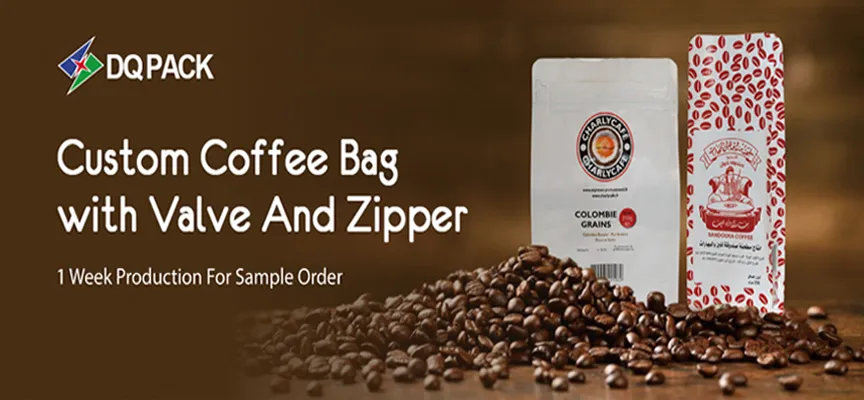
DQ Pack stands as a شركة رائدة في مجال تصنيع العبوات المرنة المخصصة with a strong focus on custom coffee and food flexible packaging solutions. Backed by an in-house R&D department, we continuously refine materials, barrier performance, and printing precision to meet the evolving demands of global coffee brands.
Our innovation-driven approach allows us to offer packaging that protects freshness, enhances shelf appeal, and aligns with sustainable goals—making DQ Pack a reliable partner for coffee packaging excellence.
Conclusion — Packaging is a Coffee Quality Control
The importance of coffee packaging is that it is the final and continuous safeguard of roast quality and aroma. Define your priorities (shelf life, distribution profile, sustainability), translate them into barrier and mechanical targets, then select laminate, valve, and format that meet those specs. Work with suppliers who provide finished-pouch data and pilot support — the right packaging turns roastsmanship into a consistent cup at the consumer’s home.

